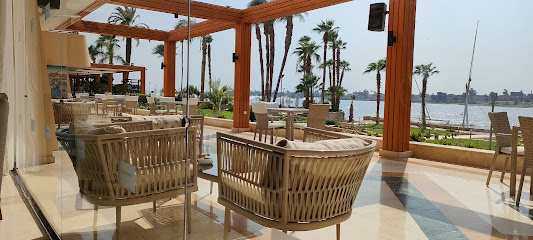
Discover the Magnificence of Karnak Open-air Museum
Explore the timeless wonders of the Karnak Open-air Museum in Luxor, a grand testament to ancient Egyptian civilization and artistry.
The Karnak Open-air Museum, located in the heart of Luxor, is a breathtaking testament to ancient Egyptian civilization. As one of the most significant historical landmarks, it captivates tourists with its expansive collection of temples, statues, and hieroglyphs, offering a glimpse into the grandeur of a bygone era. Visitors can wander through the vast open-air grounds, marveling at the intricately designed architecture and the rich history that surrounds them.
A brief summary to Karnak Open-air Museum
- الكرنك،, Karnak, Luxor Governorate, EG
Local tips
- Visit early in the morning to avoid crowds and enjoy cooler temperatures.
- Wear comfortable shoes as you'll be doing a lot of walking on uneven surfaces.
- Bring water and snacks, as amenities within the museum may be limited.
- Consider hiring a local guide for an in-depth understanding of the site's history.
- Do not miss the sound and light show in the evening for a magical experience.
Getting There
-
Walking
If you are staying in the East Bank area of Luxor, you can reach the Karnak Open-air Museum by walking. Start from the Luxor Temple, which is centrally located. Walk north along the Corniche (the riverfront promenade) until you reach the intersection with the street leading to Karnak. This should take about 30 minutes on foot. Once you reach the main road, turn left and continue walking straight for approximately 1 kilometer until you see signs for the Karnak Open-air Museum. The entrance will be on your right.
-
Horse-drawn carriage (Calèche)
For a more traditional experience, consider taking a horse-drawn carriage (Calèche). You can easily find a Calèche near major tourist spots like Luxor Temple or along the Corniche. Negotiate the price before starting your journey; it typically costs between 50-100 EGP depending on your negotiation skills and the distance. Ask the driver to take you to the Karnak Open-air Museum. The ride should take around 15-20 minutes.
-
Bicycle rental
Another option is to rent a bicycle, which can be a fun and eco-friendly way to explore the area. Many hotels and rental shops on the East Bank offer bicycles for rent, usually around 20-50 EGP per hour. Once you have your bike, head towards the main road leading to Karnak, following the same route as mentioned for walking. The bike ride should only take 10-15 minutes.
-
Local minibus
If you prefer public transport, you can take a local minibus to Karnak. Head to the nearest bus stop and look for a minibus that has 'Karnak' written on it. These minibuses are usually crowded and cost around 5-10 EGP per person. The ride might take around 10-15 minutes, depending on traffic. Get off at the closest stop to the museum and walk the remaining distance, which should be just a few minutes.
Discover more about Karnak Open-air Museum
Iconic landmarks you can’t miss
Column of Taharqa
0.2 km
Explore the Column of Taharqa, a stunning historical landmark in Karnak, Luxor, showcasing the extraordinary artistry of ancient Egyptian architecture.
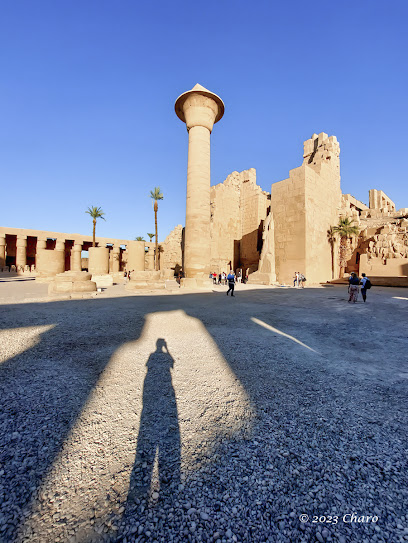
Rovine del tempio di thot
0.5 km
Explore the Temple of Thoth in Luxor, a historical landmark that unveils the mysteries of ancient Egyptian civilization.
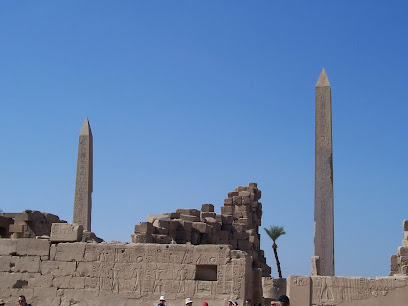
Alexbank
2.1 km
Experience the convenience of Alexbank in Luxor, your essential stop for financial services amidst the treasures of ancient Egypt.

NBE ATM - Sofitel Winter Palace Hotel 1 Luxor - فندق سوفتيل 1 الأقصر
2.3 km
Conveniently located at the Sofitel Winter Palace Hotel, NBE ATM provides 24/7 access to cash for tourists exploring the historical treasures of Luxor.

Luxor Egypt
2.7 km
Discover Luxor, Egypt - A timeless journey through the heart of ancient history and culture, where majestic temples and tombs await your exploration.
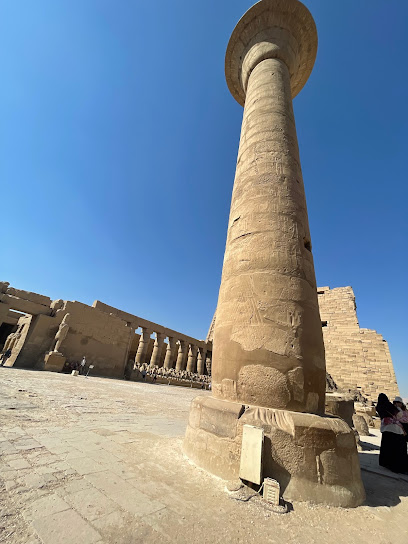
Luxor Nile Ferry - West Bank
2.8 km
Sail the historic Nile River with Luxor Nile Ferry, connecting you to the majestic wonders of Egypt's West Bank.
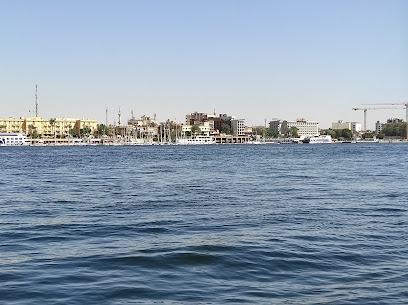
Ancient Luxor Quay
2.9 km
Explore Ancient Luxor Quay, a historical landmark along the Nile, where Egypt's ancient wonders come to life amidst stunning views and rich culture.

ميدان أبوالحجاج
2.9 km
Discover the vibrant heart of Luxor at Abu al-Haggag Square, where history, culture, and local life intertwine in a captivating experience.
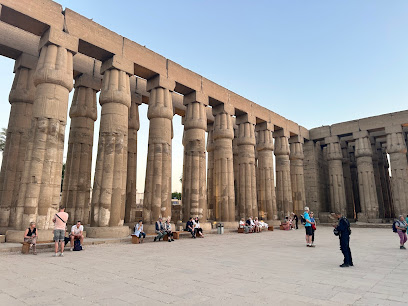
West Bank Private Transport Luxor
2.9 km
Explore the wonders of Luxor effortlessly with West Bank Private Transport's premium limousine and taxi services for a seamless travel experience.
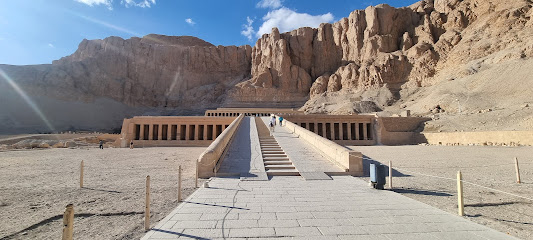
El-Gezira Hotel & Restaurant
3.0 km
Experience luxury and culture at El-Gezira Hotel & Restaurant, nestled along the Nile with exquisite dining and live music in Luxor.
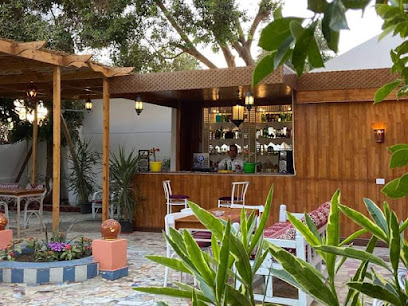
Luxor day tour to East & West Banks
3.3 km
Experience the majesty of Luxor with a captivating day tour of the East and West Banks, where ancient wonders reveal Egypt's rich history.
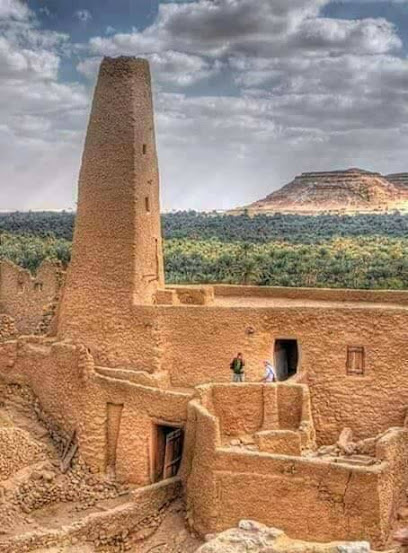
البنك الأهلي المصري فرع الاقصر
3.4 km
Discover convenience at the Egyptian National Bank in Luxor, the essential stop for travelers needing reliable banking services while exploring ancient Egypt.
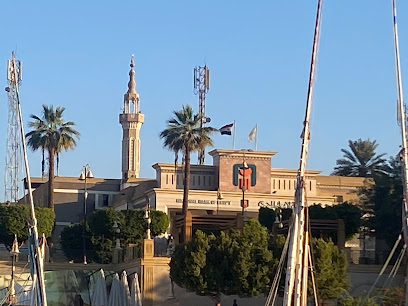
Colossus of Memnon on the West Bank
3.7 km
Explore the Colossus of Memnon in Luxor, an iconic symbol of ancient Egypt, showcasing remarkable artistry and rich historical significance.
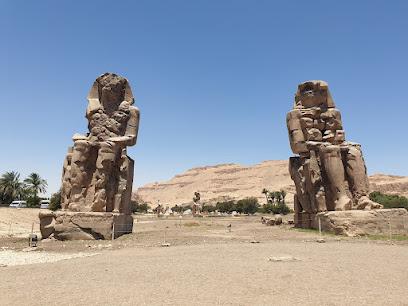
Cimitero (necropoli) El-Khokha
4.1 km
Uncover the rich history and artistry of ancient Egypt at El-Khokha Necropolis, a captivating yet lesser-known treasure in Luxor.

Necropoli (cimitero)Nefermenul
4.1 km
Uncover the mysteries of ancient Egypt at the Necropolis of Nefermenul, a captivating burial site in Luxor, rich in history and culture.

Unmissable attractions to see
First Pylon
0.1 km
Explore the grandeur of the First Pylon, a monumental gateway to the Temple of Karnak in Luxor, Egypt, showcasing ancient Egyptian history and architecture.
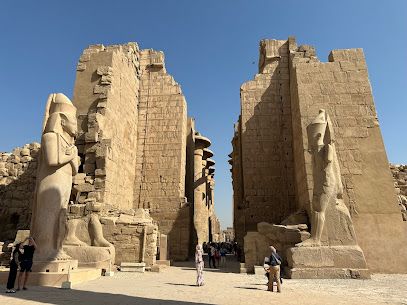
Avenue of the Rams
0.2 km
Explore the Avenue of the Rams in Luxor, a historical landmark lined with majestic sphinxes leading to the grand Karnak Temple, rich in ancient Egyptian culture.

Karnak, Egypte
0.2 km
Explore the awe-inspiring Karnak Temple in Luxor, Egypt - a monumental symbol of ancient Egyptian civilization and architecture.

Karnak
0.2 km
Experience the grandeur of Karnak, an ancient temple complex in Luxor that showcases the rich history and culture of Egypt's remarkable civilization.
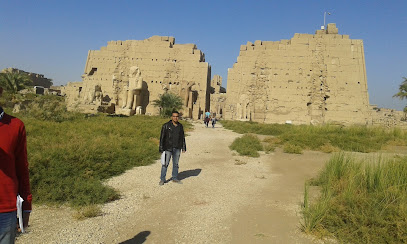
Hypostyle Hall
0.2 km
Explore the breathtaking Hypostyle Hall in Luxor, a historical landmark showcasing ancient Egyptian architecture and artistry.
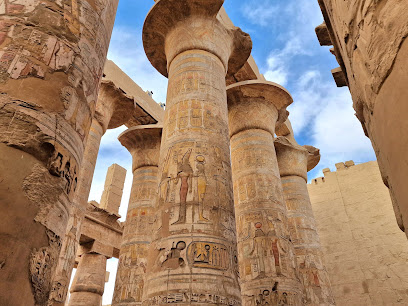
Pillar Hall in Karnak Temple
0.2 km
Explore the monumental Pillar Hall in Karnak Temple, Luxor—an architectural wonder showcasing ancient Egyptian artistry and history.
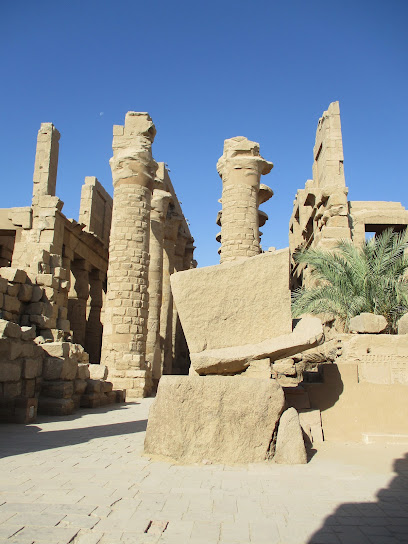
Obelisk of Thutmose I
0.2 km
Discover the Obelisk of Thutmose I at Karnak Temple in Luxor, a stunning ancient monument showcasing Egypt's rich history and architectural brilliance.
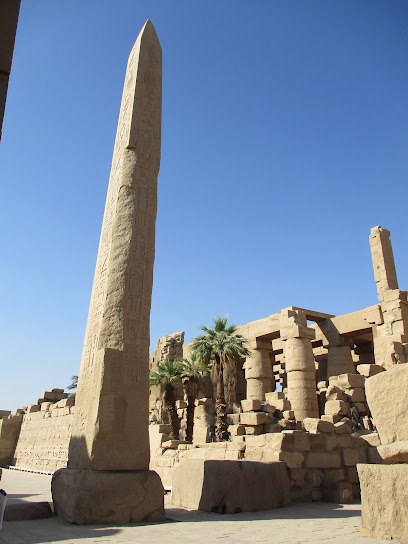
Ramesses III Temple
0.2 km
Discover the Temple of Ramesses III in Luxor, a stunning ancient structure showcasing the grandeur of Egypt's architectural and cultural heritage.
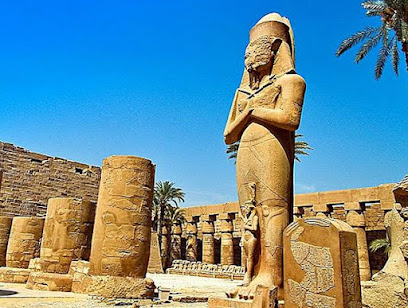
Obelisk of Hatshepsut
0.3 km
Discover the Obelisk of Hatshepsut in Karnak, Luxor - a magnificent tribute to ancient Egypt's artistry and history.
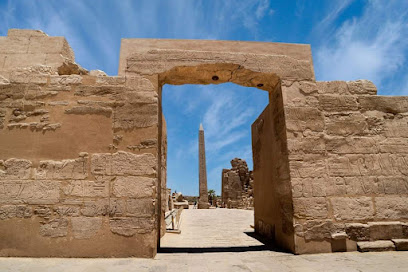
Precinct of Amun-Re
0.3 km
Explore the grandeur of the Precinct of Amun-Re, a UNESCO World Heritage site in Luxor, where ancient Egyptian history and spirituality come to life.
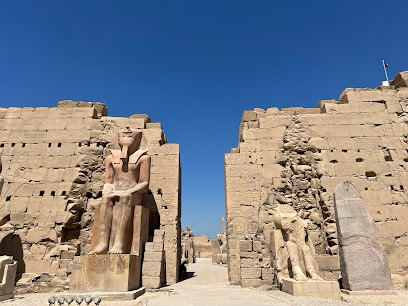
Temple of Thutmose III
0.4 km
Discover the grandeur of the Temple of Thutmose III in Karnak, a historical landmark showcasing the splendor of ancient Egyptian civilization.
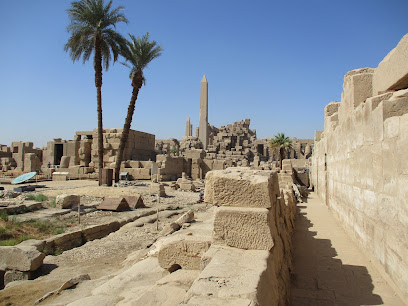
Sound & Light
0.4 km
Discover the majesty of ancient Egypt at the Karnak Sound and Light Show, where history comes alive in a breathtaking display of sound and light.
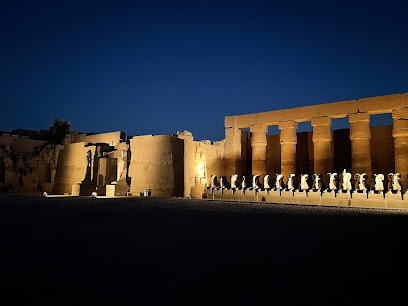
Temple of Ramesses II
0.4 km
Explore the grandeur of the Temple of Ramesses II, a majestic historical landmark in Luxor that showcases the glory of Ancient Egypt.
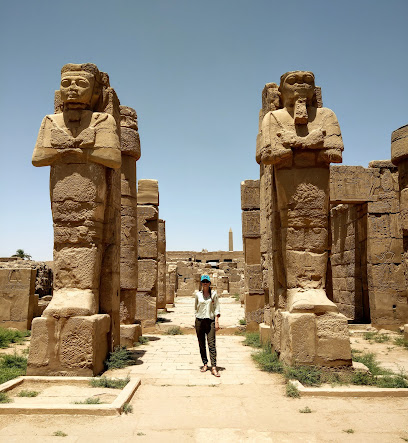
Temple Of Khonsu
0.5 km
Explore the Temple of Khonsu, a hidden gem in Luxor, showcasing ancient Egyptian architecture and rich cultural heritage.
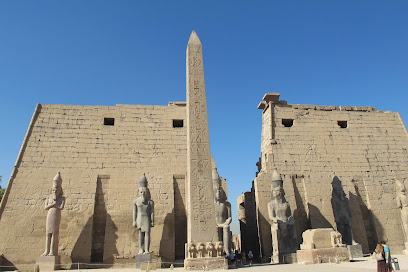
Chapel of Osiris
0.5 km
Discover the Chapel of Osiris in Luxor, Egypt - a stunning historical landmark showcasing ancient Egyptian art and spirituality.
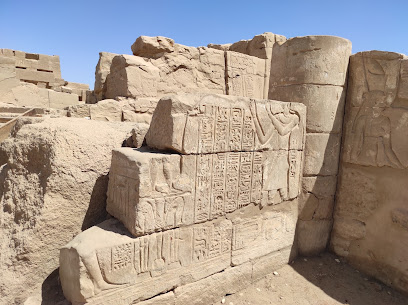
Essential places to dine
Caribbean
0.4 km
Discover authentic Caribbean cuisine in Luxor; a flavorful journey awaits with vibrant dishes and welcoming hospitality.

بيت ورد. Bayt ward
0.5 km
Discover Bayt Ward in Luxor: A Barbecue Haven Offering Authentic Flavors and Inviting Atmosphere.
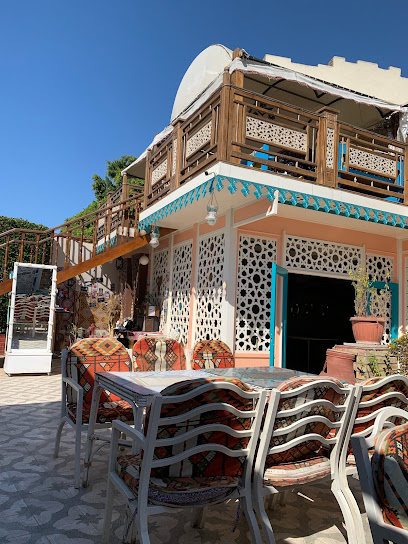
Beyt Ward Restaurant and cafe shop
0.5 km
Discover authentic Egyptian flavors at Beyt Ward Restaurant in Luxor's Karnak district - where tradition meets taste in every bite.
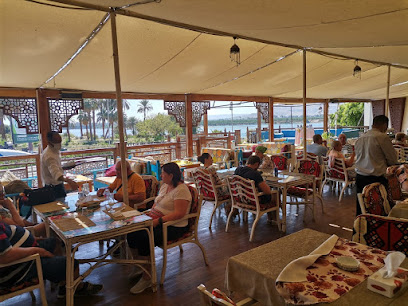
El Tawab Restaurant & Coffee Shop
0.5 km
Discover El Tawab Restaurant & Coffee Shop near Karnak Temple Square - where authentic Egyptian flavors meet inviting ambiance.
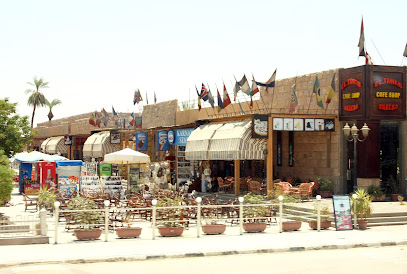
مطعم النيل السياحى - Nile Restaurant Luxor
0.5 km
Experience authentic Egyptian cuisine with stunning views at Nile Restaurant Luxor – where every meal is a memorable adventure.
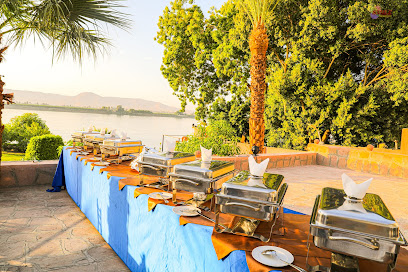
White Coffee & Restaraunt
0.6 km
Discover delicious Arab cuisine at White Coffee & Restaurant in Karnak, Luxor – where tradition meets modern comfort.
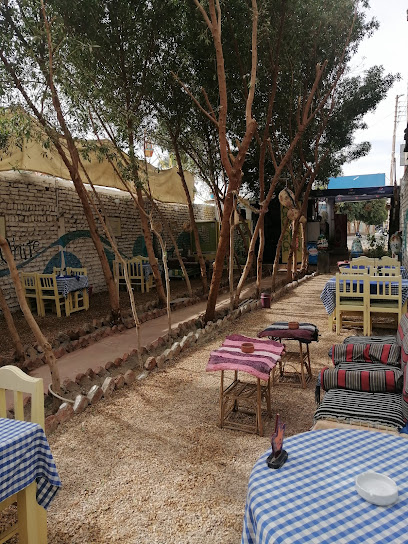
El Hussein Restaurant
0.8 km
Experience authentic Egyptian cuisine at El Hussein Restaurant in Luxor, where traditional flavors meet modern dining.
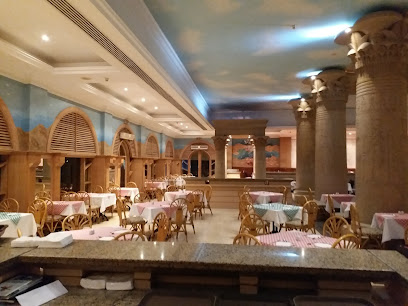
Silk Road
1.0 km
Discover the essence of Asian cuisine at Silk Road in Luxor—a culinary journey reflecting history and flavor.
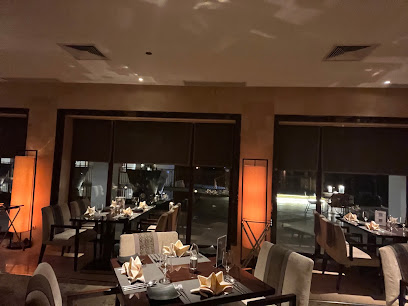
Rosetta
1.0 km
Experience the rich flavors of Egyptian cuisine at Rosetta Buffet in Karnak, Luxor - where every meal is a celebration.
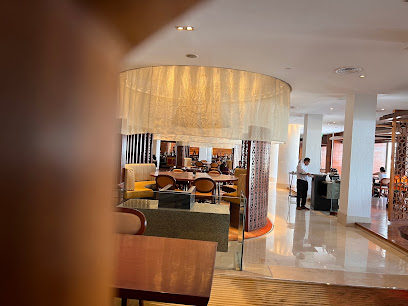
Olives
1.1 km
Experience exquisite Egyptian cuisine at Olives in Karnak, Luxor – where fine dining meets rich cultural heritage.
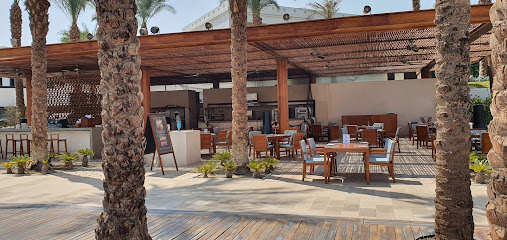
Casablanca Restaurant
1.7 km
Experience authentic Egyptian cuisine at Casablanca Restaurant in Luxor - where tradition meets taste.
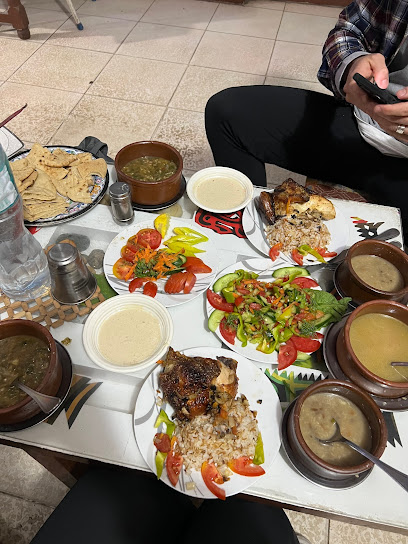
Kaya Restoz
1.9 km
Discover Kaya Restoz in Luxor: where Native American flavors meet Egyptian hospitality along the Nile.

مطعم الميناء Almina Restaurant
2.2 km
Experience exquisite dining at Almina Restaurant: where Japanese Izakaya meets fast food in the heart of Luxor.

Oasis Palace
2.2 km
Experience exquisite flavors at Oasis Palace in Luxor – where traditional Egyptian cuisine meets modern dining.

Al Sahaby Lane Restaurant
2.6 km
Experience authentic Egyptian cuisine at Al Sahaby Lane Restaurant in Luxor – where tradition meets taste.
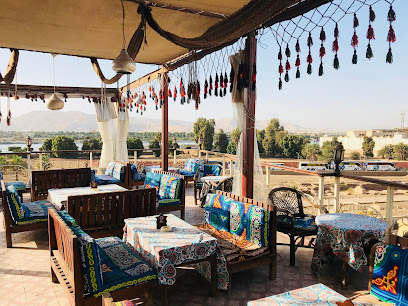
Markets, malls and hidden boutiques
Cleopatra Perfume Oils Palace
0.3 km
Explore the luxurious world of handcrafted perfume oils at Cleopatra Perfume Oils Palace in Luxor, where ancient traditions meet modern elegance.

New Karnak Papyrus Instute
0.4 km
Explore Egypt's rich heritage at the New Karnak Papyrus Institute, where ancient craftsmanship meets modern artistry in Luxor.
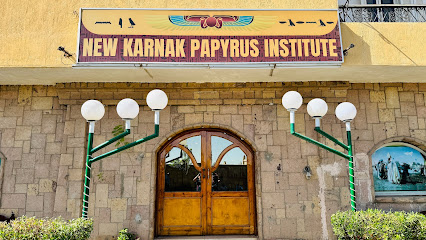
World Famous Bazaar
0.5 km
Explore Luxor's World Famous Bazaar, a vibrant gift shop offering authentic Egyptian treasures and a unique cultural experience.
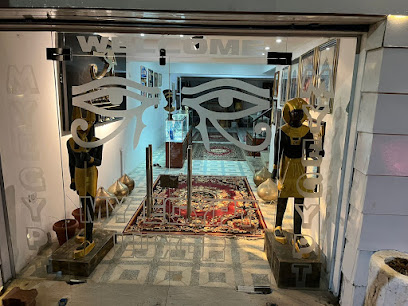
Anubis shop for souvenirs
0.5 km
Explore Anubis Shop for Souvenirs in Luxor for authentic Egyptian treasures and unique gifts to cherish your travel memories.
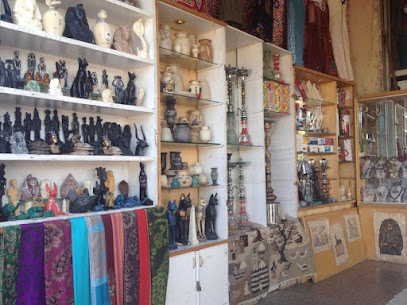
New Isis papyrus museum
0.5 km
Explore the New Isis Papyrus Museum in Luxor, a captivating journey through ancient Egyptian art and culture showcasing exquisite papyrus artifacts.
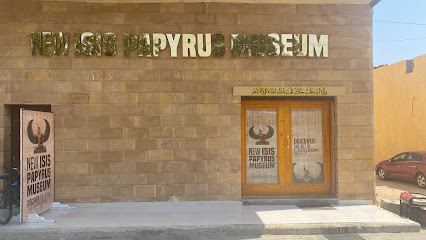
Hamees Papyrus
0.7 km
Explore Hamees Papyrus in Luxor for unique souvenirs that capture the essence of Egypt's rich cultural heritage and artistry.
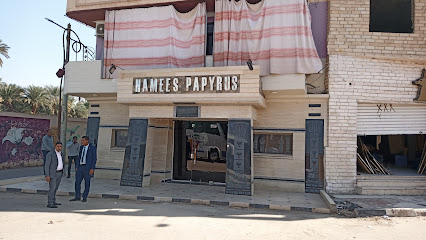
محلات الحاج عبده للملابس والمفروشات الجاهزة
0.7 km
Explore المحلات الحاج عبده for exquisite clothing and home textiles in the heart of Luxor, where tradition meets modern elegance.

Merit Aton
0.8 km
Explore the rich heritage of Egypt at Merit Aton, the ultimate antique store in Luxor, showcasing timeless treasures and unique artifacts.
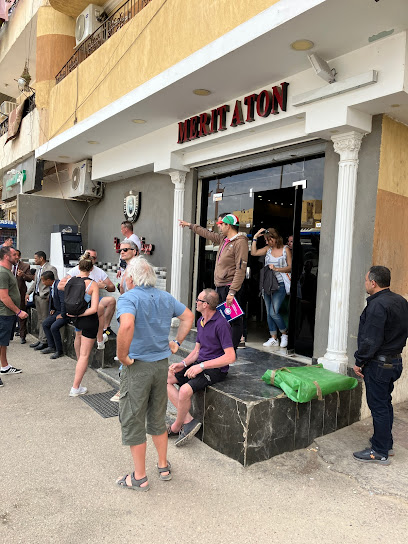
Old Shop
1.2 km
Explore Old Shop in Luxor's Karnak for unique jewelry, antiques, and handcrafted treasures that reflect Egypt's rich heritage.

أبو وحيد للإستيراد والتصدير
2.2 km
Explore Abu Wahid, Luxor's premier souvenir store, for authentic Egyptian crafts and unforgettable shopping experiences.
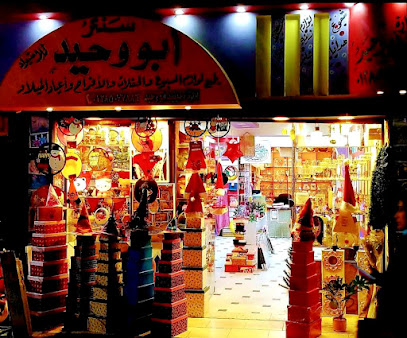
Hassle Free Shop
2.3 km
Explore the enchanting Hassle Free Shop in Luxor, the perfect destination for unique books, antiques, and souvenirs reflecting Egyptian culture.
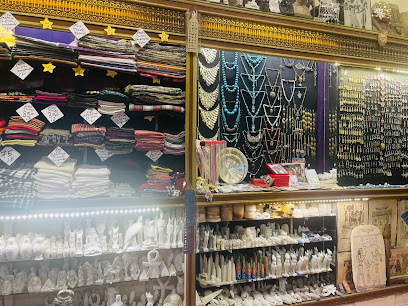
El Fashny Shop - متجر الفشني
2.6 km
Discover unique Egyptian gifts and souvenirs at El Fashny Shop in Luxor, where tradition meets artistry in a charming shopping experience.

Tienda de recuerdos
2.7 km
Discover authentic Egyptian souvenirs at Tienda de Recuerdos in Luxor, a vibrant store filled with handcrafted treasures that embody the spirit of Egypt.

Lotus Bazar
2.7 km
Explore Lotus Bazar in Luxor for unique fashion accessories, exquisite jewelry, and enchanting perfumes that embody the essence of Egyptian craftsmanship.

Pr-Ba Concept Store (Luxor)
2.7 km
Explore the Pr-Ba Concept Store in Luxor for unique handicrafts and souvenirs that capture the essence of Egyptian culture.
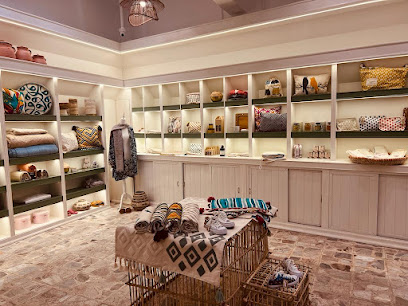
Essential bars & hidden hideouts
Arabi Paradise
0.4 km
Experience the authentic flavors of Egypt at Arabi Paradise, a culinary gem in Luxor that delights every palate.
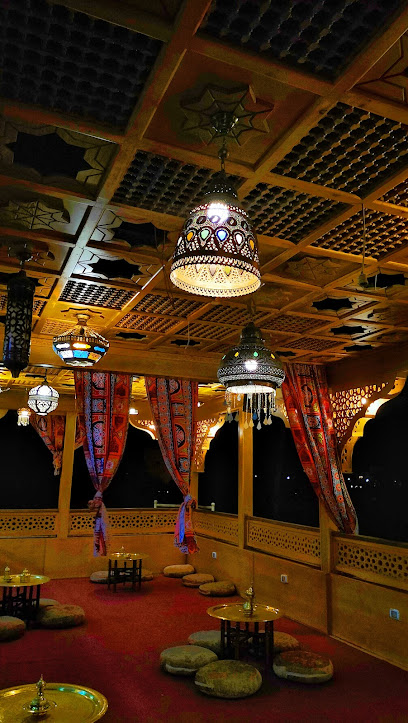
Bar & Byke Rent, West Luxor
2.4 km
Discover the perfect blend of relaxation and adventure at Bar & Byke Rent in Luxor, featuring refreshing drinks and bike rentals for exploring ancient wonders.

Wine palace
2.7 km
Discover the enchanting Wine Palace in Luxor, where local flavors and a vibrant atmosphere meet for a memorable evening.
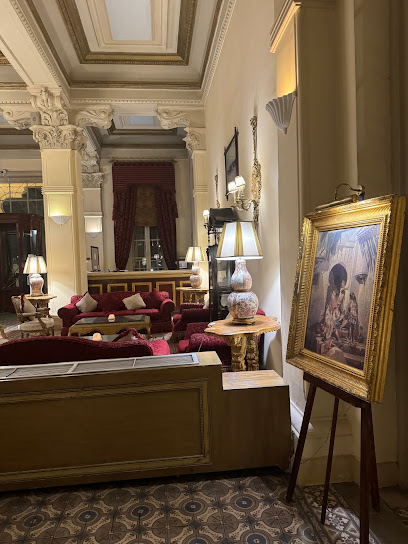
حسني لطيف سلامة
2.8 km
Experience the vibrant nightlife of Luxor at حسني لطيف سلامة, where local charm meets refreshing drinks in a lively atmosphere.
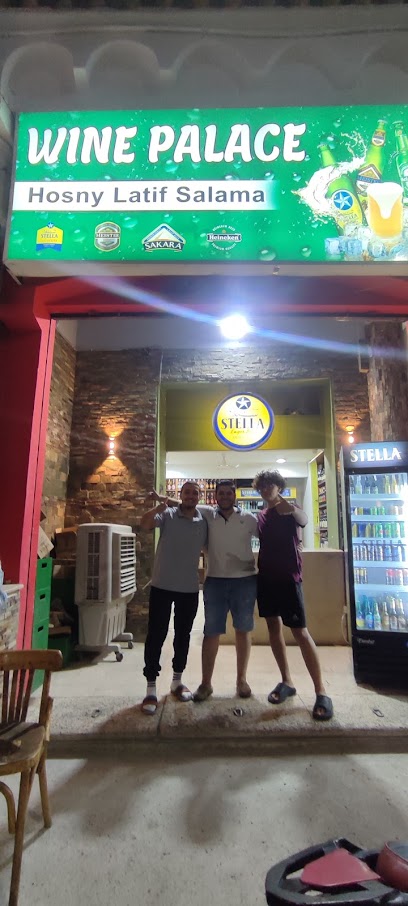
انتيكةAntika
2.9 km
Discover Antika, Luxor's vibrant cocktail bar, where exquisite drinks and lively ambiance create unforgettable moments.
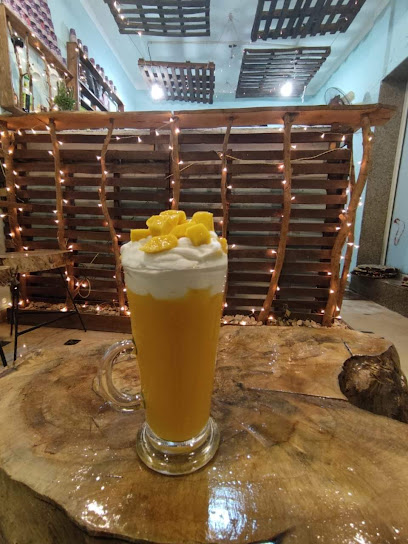
Snack Time
3.0 km
Experience the vibrant flavors of Egypt at Snack Time, your go-to spot for authentic cuisine and delicious pizza delivery in Luxor.

Royal Bar
3.3 km
Experience the vibrant ambiance of the Royal Bar in Luxor, where exquisite drinks meet stunning Nile views for an unforgettable evening.
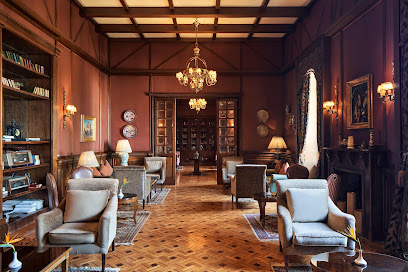
G.old
3.5 km
Experience vibrant nightlife at G.old, a premier bar in Luxor, Egypt, offering an extensive drink selection and a lively atmosphere.
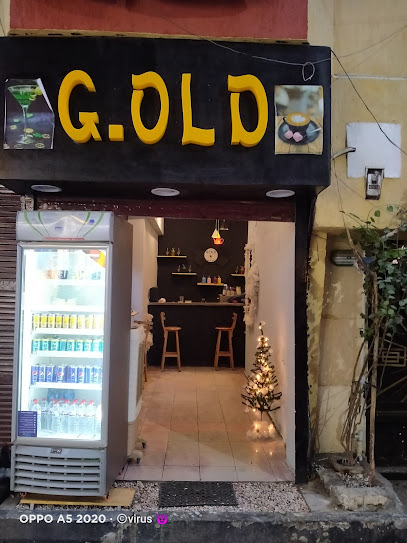
مصطفى تاكس
4.3 km
Discover the vibrant nightlife at مصطفى تاكس, a lively bar in Luxor offering refreshing drinks and a welcoming atmosphere for travelers.

SunRise Bar & Restaurant Luxor
4.4 km
Experience the vibrant flavors of Egyptian and international cuisine at SunRise Bar & Restaurant in Luxor, where delightful dishes meet lively entertainment.
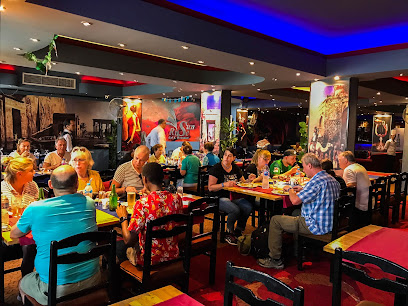
The King's Head Pub
4.5 km
Experience the vibrant local culture at The King's Head Pub, the perfect spot for relaxation and traditional Egyptian hospitality in Luxor.

ميرفيس الأيرلندية بار Murphys Irish Bar
4.5 km
Discover the heart of Irish culture at Murphys Irish Bar in Luxor, where tradition meets vibrant entertainment and delightful cuisine.
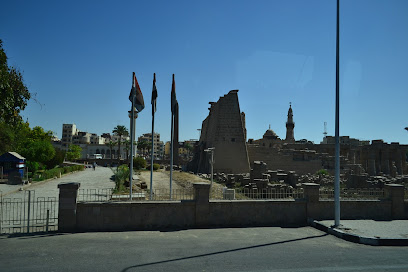
Nile Bar & Lounge
4.6 km
Experience the elegance of Nile Bar & Lounge in Luxor, where exquisite cocktails meet breathtaking views of the Nile River.

Maxime's El Saltana café
4.8 km
Discover Maxime's El Saltana Café in Luxor – where tradition meets flavor in a cozy ambiance perfect for every traveler.
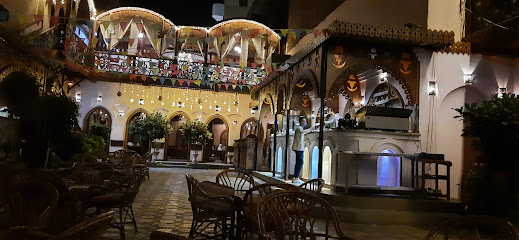
Sukkareya Lobby Bar
5.1 km
Discover the vibrant atmosphere of Sukkareya Lobby Bar in Luxor, where local flavors meet exceptional service for a memorable experience.
